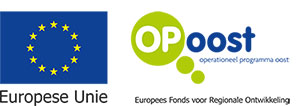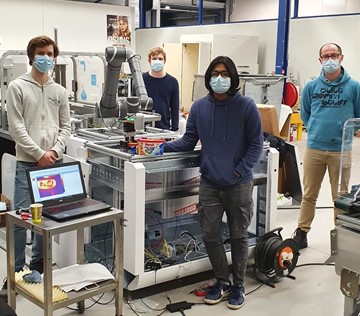Prototyping, Researching and Innovating vision technology for For two years, within the PRISMA project, six partners of Perron038 have been prototyping, researching and innovating vision technology for Smart manufacturing applications. We are happy to give you an update on the developments after each semester!
Use case IMS
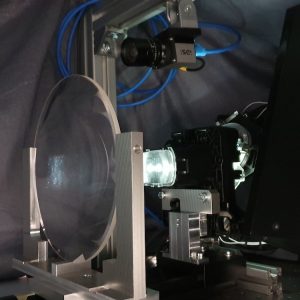 Commissioned by IMS, students have recently worked on three subprojects. One of them was to develop a machine that finds the perfect projection of a car headlight. This is all fully automated, even before it has been glued. A solution that is important in order to minimise production errors and thus waste.
Commissioned by IMS, students have recently worked on three subprojects. One of them was to develop a machine that finds the perfect projection of a car headlight. This is all fully automated, even before it has been glued. A solution that is important in order to minimise production errors and thus waste.
“The biggest challenge is to get a projection at a distance of 10 to 30 meters (33 to 98 feet) with the control system, which ensures the alignment with 6 degrees of freedom to the micrometer. This can be carried out in various ways, with their own pros and cons.” says R&D project leader Wouter Spoorendonk. “My most important lesson so far is that artificial intelligence does not have to be a ‘black box’. If you carefully design the model, we learn together, which makes it a powerful tool.”
Use case AWL-Techniek
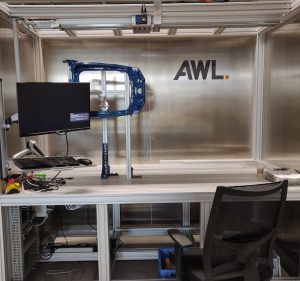 Within the PRISMA project, AWL-Techniek is conducting research into Vision possibilities for quality measurements. In the past semester, student Wilbert de Boer successfully developed software as well as a demonstrator. The demonstrator can function within the required 0.08 millimeter accuracy.
Within the PRISMA project, AWL-Techniek is conducting research into Vision possibilities for quality measurements. In the past semester, student Wilbert de Boer successfully developed software as well as a demonstrator. The demonstrator can function within the required 0.08 millimeter accuracy.
Development Engineer Johan van Voskuilen explains: “The collaboration within the PRISMA project is great, partly thanks to the open communication between all partners. There are many opportunities to learn from each other, which are certainly being used.”
Use case Tembo
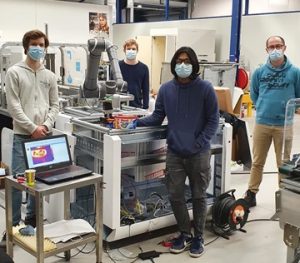 Within the PRISMA project, Tembo researches the use of Vision technology in order to detect any leakage. In the past semester, research was again conducted into advanced algorithms for the software side of this solution.
Within the PRISMA project, Tembo researches the use of Vision technology in order to detect any leakage. In the past semester, research was again conducted into advanced algorithms for the software side of this solution.
The biggest development at the moment is the application of Hybrid Learning within this project. There are two possibilities when it comes to vision software: classical computer vision, where software for classification, for example, is written by an expert, and Artificial Intelligence or Machine Learning, where an algorithm is trained without the assistance of a vision expert. Hybrid learning takes the best of both vision camps and combines them. The results are promising.
Lead Data Engineer Kenny Ramaker explains: explains: “We recently organised a workshop for the project partners and the collaboration was fantastic. Input from each of the partners in which problems were shared and discussed. As it turns out, we look at the future in the same way and experience the same challenges. An eye-opener for me is that the collaboration at Perron038 with colleagues from partners is just as easy as with your own colleagues.”
PRISMA receives a contribution from the European Fund for Regional Development of the European Union.
